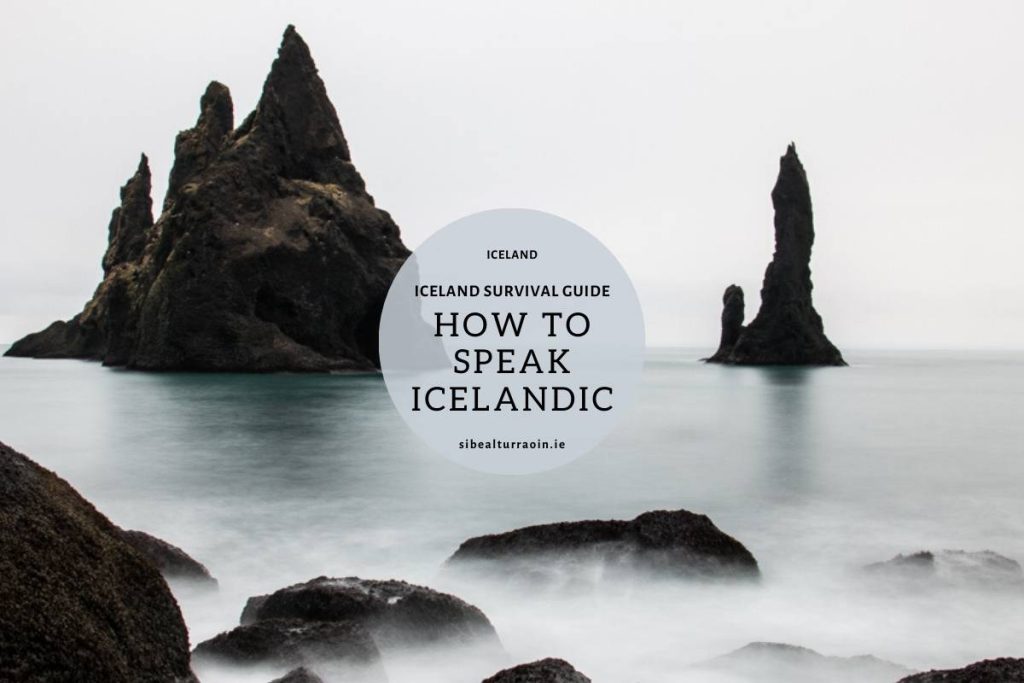
Icelandic is a fascinating language. It’s an insular language, which has mostly stayed the same since the country’s first inhabitants settled there.
It’s also a conservative language, keeping many grammatical features that disappeared from continental Scandinavian languages. For instance, the computer word is tolva, a combination of tala (number) and volva (prophetess). Other examples include my band and Kaufmann.
Basics
As a language that’s been around for over 1,000 years, Icelandic is one of the world’s oldest and most unique. Due to its isolation from other countries, the language has maintained a high linguistic purity over the centuries. This blog post will examine this intriguing language’s history and contemporary usage.
Icelandic is a North Germanic language closely related to Faroese, West Norwegian dialects, and the extinct Norn language. It is a highly inflected language with three grammatical genders, four cases for nouns (nominative, accusative, genitive, dative), and a complicated pronoun and verb inflection system.
One of the most distinctive features of Icelandic is its tradition of “market,” or language cultivation. This policy, which stems from Icelandic nationalist sentiment, discourages using loanwords in the language. Instead, new words are created from native elements. For example, the computer word is tolva, a fusion of the ancient words’ tala and volva, while the airport’s name is flugvollur, which means long thread.
Icelanders also don’t have family names like Americans; instead, they use a patronymic form based on their father’s first name. Females add -dottir or -dottirs to the name, while males add -son or -sonr. This practice is helping to preserve the language as English becomes more and more common in society.
Vocabulary
Despite having an alphabet that looks quite different from English’s, Icelandic is a reasonably easy language to pronounce; what language do they speak in Iceland? There are no silent letters, and all vowels have their sounds (except eth, which represents a voiced th sound, like in bathe).
Icelanders are known for calling everyone by their first names (even music icon Bjork and President Vigdis), and a government-run committee decides what names are acceptable for newborns. Learning Icelandic and using first names can deepen local relationships.
In addition to the vocabulary, some words can be difficult for beginners:
For example, kaffi is not simply Icelandicized coffee but also a word for a certain kind of milk (similar to banana for bananas). Another hard Icelandic word is foss, which refers to waterfalls and means “waterfall in the mountains.” The Icelandic language is unique because it has three gender forms and uses four grammatical cases. This can confuse newcomers, but this will become easier as you continue to learn the language. Despite these challenges, many resources are available to help you understand the Icelandic language.
Grammar
The Icelandic language has some very peculiar grammatical features that can be difficult to learn. It is a heavily inflected language with four cases: nominative, accusative, dative, and genitive. Additionally, Icelandic nouns can be either masculine, feminine, or neuter, and they are also divided into two main declension paradigms based on their genitive singular and nominative plural endings.
Moreover, the language uses no indefinite article (a/an in English), and the definite article is usually attached to the end of a noun. The word order is subject-verb-object, and the verbs can be used in simple and complex tenses. Icelandic has no direct translation for some of the English word forms, including the indefinite articles, and many letters in the alphabet sound different from their equivalents in English.
One of the best ways to practice your reading skills in Icelandic is with Sagnsyrpa, a book series composed of short, written pieces that start easy and increase in difficulty. It also offers a test at the end to challenge your abilities and help build your Icelandic language skills.
Colloquial Icelandic is another excellent resource for learning the Icelandic language. Its writing is more controlled than the previous book, but it offers the reader some flexibility with the answers to its exercises. This helps to make the material feel more personal and familiar to the student. It also includes a short dictionary at the end of the book.
Phrases
As Icelandic has been isolated from other languages for a long time, its grammar has remained relatively unchanged. It still has a four-case system with less inflection and fewer verb forms than German or Danish. It also has a more conservative spelling than most Scandinavian languages.
Icelandic is a phonetic language, and each letter has a distinct sound. The alphabet has 32 letters, including three that English speakers don’t use: th and d (pronounced “thorn” and “dye”), plus the vowels a and o. In addition to spelling, many grammatical differences between Icelandic and English can be confusing for newcomers.
While some consider Icelandic a problematic language, this is often the result of misguided assumptions about grammar and vocabulary. If you can get past the initial challenges, you’ll find that it’s similar to English and other European languages.
The best way to learn Icelandic is to immerse yourself in it, which can be challenging for beginners. Luckily, there are plenty of resources available to help you get started.
One option is to download Mimir, a comprehensive but concise grammar notebook for Icelandic that’s incredibly user-friendly for English speakers. Another resource is Modern Icelandic Magic Sheet, a free PDF that breaks down nouns, cases, pronouns, and adjectives in easy-to-understand steps.
